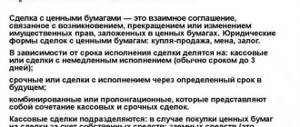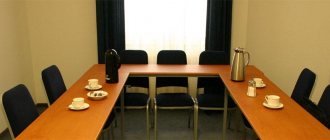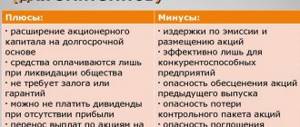Basic moments:
- Types of analysis
- How to analyze the Forex market
- Stages of analysis
Any successful transaction in the market begins with researching a large amount of diverse information. In order to make a decision on entering the market or, on the contrary, exiting a transaction, or making adjustments to the investment portfolio, it is necessary to understand the current market situation and forecast the further movement of the price of the selected assets.
It doesn't matter if it's short-term trading or long-term investing, opening a position should be based on a conscious decision. Such a decision can only be made as a result of serious analytical preparatory work.
The deal is already the tip of the iceberg; all the bulk of the work is carried out before the markets open. Doing your homework and preparing for the trading day are elements of a successful trading system. Much attention was paid to this issue at the seminar by A. M. Gerchik “Trading from A to Z”
Kinds
First of all, you need to clearly define your goals. The subject of your research depends on what information you want to obtain. The main structural components of the market analyzed by the entrepreneur are:
- market condition (capacity, conditions, trends, reaction to new products);
- the share of different companies in the market, their capabilities and prospects;
- target segments, their behavioral characteristics and product requirements, level of demand;
- price level and profit margin in the industry;
- free niches in which you can do business;
- competitors, their strengths and weaknesses.
Speaking about how to correctly analyze the market, it is worth emphasizing that a specific, understandable goal allows you to reduce costs, not waste time processing useless information, and immediately select the most effective research methods.
Market dynamics
I prefer to look at market dynamics from three angles.
The first of these is the dynamics of the problem market as a whole. The area in which we work is experiencing rapid growth, decline or stagnation.
The second is the dynamics of our industry. A scenario is quite possible in which the market as a whole grows, and our segment declines. Or vice versa.
The third is dynamics relative to GDP or related segments. It will help in assessing the sphere in the context of the general economic situation.
How to evaluate?
The same way you assessed the market. If you do not have enough data for previous periods, then use alternative methods. For example, statistics on key queries in Wordstat, “Keyword Planner” in Google Ads or Google Trends.
As for the time period for assessment, much depends on the industry itself. The older the industry, the larger the gap. Use five years as the standard.
Step 1: Gathering Basic Information
The “starting point” in conducting a comprehensive analysis is Market Research (in fact, the study of the market and its prospects). Ideally, it is necessary to analyze information for the last 3-5 years.
The key indicator here is market capacity. In simple terms, this is the amount of goods that consumers can buy in a certain period of time - a month or a year. The formula used for calculations is:
| V=A×N |
where: V is the market size, A is the number of the target audience (thousand people), N is the rate of product consumption for the period.
Based on this indicator, they calculate what maximum level of sales the company can achieve in a given region.
The next criterion to pay attention to is the level of demand. It is important to take into account the dynamics of the market, whether it is developing or, on the contrary, declining. In the first case, it is necessary to determine its potential and limits of growth, and at the stage of stagnation, it is necessary to understand how long this will continue.
Additionally, they study factors influencing the market, the share of key competitors in total sales, and methods of selling products.
Based on the data obtained, it is necessary to identify the main trends and directions of development, as well as analyze the market prospects - what consumers are choosing now and how their preferences may change in the foreseeable future.
Tip: Up-to-date statistics and research on individual markets at the international and national levels can be found in industry journals and economic reports.
Customer loyalty
We found out the market size, size of segments and the share of players in each segment. To understand our own prospects, we lack an assessment of customer loyalty.
Loyalty is a double-edged sword.
In a market with low loyalty, like household chemicals, it is difficult for each player to get a loyal customer. Including us. In a market with high loyalty, like CRM, it is difficult to gain competitors' customers.
How to evaluate?
Conduct a survey: live or electronic - in this case it is not so important. You are interested in four things:
- what product is the consumer currently using;
- how long the consumer has been using the product;
- how many products the consumer used;
- what product have you used before (if you have used it).
There are a lot of tools for surveys these days; for primary surveys I use Yandex.Vzglyad. Cheap and easy. Although some have questions about the reliability of the answers.
Stage 2: Identifying target segments
So, we know the volume of the analyzed market as a whole. Now it is necessary to determine which consumer groups bring the company the main profit, what unites them. To segment the audience, different criteria are used - gender, age, profession, income level, social status, interests, etc. Depending on the priorities, the significance of individual factors may differ.
To decide which segments to target first, additionally analyze:
- volume of each segment (number of potential customers);
- geographical location;
- accessibility to different consumer groups;
- Estimated costs of time and finances to start activities.
A competent choice of target audience in the future will save the entrepreneur from unnecessary costs and will allow him to direct resources to attracting the most “profitable” buyers.
Stage 2: Study of external factors
Any market is constantly exposed to external influences. Modern marketers identify 6 types of external factors that influence organizations:
- political (state policy in the areas of transport, employment, education, etc., taxes);
- economic (inflation level, interest rate);
- social (population, worldview, level of education);
- technological;
- legal (laws governing the creation and operation of enterprises);
- environmental.
Some trends appear slowly and are easy to predict - for example, back in the 70s, society began to discuss environmental issues, and now eco-friendly business has become a global trend. At the same time, the economic situation can change at any moment, and it is simply impossible to say with certainty what will happen in 3-5-10 years.
Design and estimate method
This method consists in determining the NMCC, the price of a contract concluded with a single supplier, for:
- construction, reconstruction, overhaul of a capital construction project on the basis of design documentation in accordance with the methods and standards of construction work and special construction work approved by the executive authority exercising the functions of developing state policy and legal regulation in the field of construction, or by the executive authority of the subject RF;
- work to preserve cultural heritage sites (historical and cultural monuments) of the peoples of the Russian Federation, in addition to scientific and methodological guidance, technical and architectural supervision, on the basis of project documentation and in accordance with restoration norms and rules approved by the federal executive body authorized by the Government of the Russian Federation in the field state protection of cultural heritage sites;
- current repairs of buildings, structures, structures, premises.
Stage 4: Competitor Analysis
Speaking about how to learn to analyze the market, special attention should be paid to studying enterprises that are already operating in this industry. First of all, you need to learn as much as possible about the companies themselves and their capabilities:
- technologies used in the production of goods and services;
- availability of patents and unique technological advantages;
- personnel qualification level;
- access to limited, rare resources;
- possibility of obtaining additional investments.
The next step is to study competitors' products and services. It is necessary to evaluate “through the eyes of the consumer,” taking into account both rational and emotional factors.
All that remains is to systematize the data and objectively compare the main market players. For convenience, we suggest using a simple template.
| Company A | Company B | Company B |
| “Intersection points” (where exactly do you compete) | ||
| TA (target audience) | ||
| Market share | ||
| Product range and quality | ||
| Prices | ||
| Marketing strategy (offline) | ||
| Marketing strategy (online) | ||
| Sales Policy | ||
| Competitive advantages | ||
| Competitor's strengths | ||
| Competitor's disadvantages |
By completing the table, you will get a basic understanding of the main market players and their activities, and you will also be able to compare their performance with yours.
Features of determining comparability
The identity of services and objects is determined in accordance with the following scheme:
- Identical products. Legislative justification: part 13 article 22 of Federal Law No. 44. Products are compared based on functional, technical and performance properties. You can also take into account the manufacturer, the country from which the goods came. Minor differences are not taken into account.
- Identical works . Legislative justification: part 13 of article 22 of Federal Law No. 44. The works are compared based on qualitative characteristics. The technologies and methods used and the business reputation of the contractor are taken into account.
- Homogeneous goods (non-identical) . Legislative justification: part 14 of article 22 of Federal Law No. 44. Similar properties, characteristics that allow objects to perform similar functions, and the possibility of commercial interchangeability are taken into account. The quality of goods, their country of origin, and the reputation of the manufacturer are taken into account.
- Homogeneous works (non-identical) . Similar characteristics are taken into account, which allow the works to be interchangeable. The quality of work, the reputation of the contractor in the market, the form and volume of services provided, and uniqueness are taken into account.
Within the framework of the comparable market prices method, the following information is used:
- Coefficients obtained as a result of applying the established formula and justified by the customer.
- Information on market prices that is publicly available.
- Price data that is obtained as a result of a request sent to the supplier.
IMPORTANT! The key rule is open access to the information used. This is necessary so that the calculations can be checked by others.
Stage 5: Price Analysis
Go ahead. Now you need to focus on one of the key aspects, namely, analyze the prices of your main competitors for goods and services.
To see the full picture, it is necessary to divide all market players into price segments - economy, premium, etc. It is also important to understand the price structure (cost, promotion and advertising costs, markup) and approximately calculate the profit from each sale.
In this case, you should take into account not only standard prices, but also the presence of bonuses, promotions, special offers, as well as installment terms.
Be sure to think about what reasons could lead to a change in average market prices upward or downward.
As a result, you should get a clear picture of competitors' pricing policies, find out what the reasons for the differences in costs are, and calculate the possible profit in N months/years. Based on this, you can determine whether the company’s prices are too high or low, how best to position the product - expensive but high quality, or affordable and economical.
In what cases is the comparable market price method used?
The initial (maximum) cost of the contract is determined by the customer. It cannot be calculated speculatively. Federal Law No. 44 states that the customer is obliged to justify the cost. It is for these purposes that the comparable prices method is used. The maximum contract value, in turn, is determined in such cases as:
- Preparation of a procurement schedule.
- Drawing up a notice of procurement.
- Preparation of procurement documents.
- Preparing an invitation to participate in a closed procurement.
The procedure for calculating the initial cost is regulated by Part 1 of Article 22 of Federal Law No. 44.
Procedure for applying the comparable market prices method
Let's look at how to use the method:
- Market analysis to find goods and services that are similar to the main object.
- Detection of identical goods or services. If they are absent, homogeneous goods and services are searched.
- Sending by the supplier inquiries about the cost of similar objects, if required.
- Placing a request in the EIS.
- Search for price information in the contract register.
- Analysis of all received information.
- Selection of the information that will be required when making calculations.
- If a price adjustment is needed, it needs to be done.
- Checking the homogeneity and reliability of available information.
After this, you can set the price and present it to the client.
Method of comparable market prices (market analysis)
This method is the most common and is used in establishing the NMCC, the price of a contract concluded with a single supplier, when comparing market prices of identical goods, works, services that are planned to be put up for auction, or in the absence of similar goods, works, services.
When using the method of comparable market prices (market analysis), information about the cost must be obtained by comparison with the terms of future procurement of commercial and (or) financial conditions for the supply of goods, works, services.
With this method, the customer has the right to use coefficients or indices justified by him to recalculate the prices of goods, works, services according to differences in the characteristics of goods, commercial and (or) financial conditions for the supply of goods, works, services.
In order to apply this method, the following can be used:
- publicly available information on market prices of goods, works, services;
- information on prices obtained at the request of the customer from suppliers supplying identical goods, works, services, or in their absence, similar goods, works, services;
- information obtained as a result of placing requests for prices of goods, works, and services in the Unified Information System.
The method of comparable market prices (market analysis) is the most common in determining and justifying the NMCC.
The customer may send a request to the supplier to provide price information. This information is also posted in the Unified Information System or printed publications.
In order to identify the homogeneity of a set of prices, it is recommended to use the coefficient of variation, which is determined by the formula (Figure 1):
NMCC by this method is determined by the formula (Figure 2):
Composition of a request to a supplier to provide price information:
- description of the procurement object indicating units of measurement, quantity of goods, volume of work;
- a list of information to determine the identity or homogeneity of goods, work, services offered by the supplier;
- conditions for the execution of the contract, as well as the procedure for supplying products, performing work, providing services, expected terms of purchase, payment procedure, amount of contract security, requirements for the warranty period of goods, work, services and (or) the scope of providing guarantees of their quality;
- deadlines for providing price information;
- information that the collection of information does not entail any obligations of the customer;
- an indication that the response to the request must clearly determine the price of a unit of goods, work, services and the total price of the contract on the terms specified in the request, the validity period of the proposed price, and the calculation of such a price. This is done to prevent intentional overestimation or underestimation of the amount.
What information does the customer not have the right to use when determining the NMCC?
- submitted by persons included in the RNP;
- obtained from anonymous sources;
- information obtained through a request and that does not meet the requirements for the content of documentation established by the customer;
- does not contain price calculations.
Recommendations for adjusting prices depending on the type of purchase:
— competition — increase by no more than 10%; — auction — increase by no more than 13%; — request for quotations, request for proposals — an increase of no more than 17%; — purchase from a single supplier — the price is not adjusted.
Recommendations to the customer when using the comparable market prices method:
- Study the market to determine goods, works, services that correspond to the description of the procurement object;
- Determine goods, works, services that are identical to the procurement object, and in their absence - homogeneous GWS;
- Send a request to the supplier for pricing information. The request must provide a detailed description of the procurement object, indicate the terms of the contract, the volume of purchase, the deadline and the desired form of providing information. Below is the recommended form of justification, which includes the name of the subject of the contract, the main characteristics of the procurement object, the method for determining the NMCC with justification, calculation, as well as the date of preparation of the justification and the signature of authorized persons (Figure 3).
- Place a request in the EIS;
- Search for price information in the register of contracts previously concluded by customers;
- Monitor publicly available price information.
- Select documents and information that contain all the necessary information to determine the NMCC;
- Make price adjustments if necessary;
- Check the uniformity of price information.
Stage 6: Research of main distribution channels
Marketers who analyze the market situation and participate in the development of business plans often emphasize that this point is one of the most significant.
When considering the current distribution system, it is necessary to highlight the main elements - wholesale and retail chains, individual stores, warehouses, transport companies.
They study both individual enterprises and the operation of the logistics system as a whole - how products move from manufacturers to final consumers, through which intermediaries they pass, how long it takes, etc.
What you need to find out:
- Which trading enterprises operate in a certain area (specialized and branded stores, supermarkets, kiosks, etc.), their relationship.
- Location, size and sales level of major stores.
- Distribution intensity is the percentage of points where you can buy goods from a particular manufacturer in a given region.
- Which contingent purchases more often in stores of one type or another (place of residence, average check amount, percentage of regular customers).
- The level of distribution density is the ratio of the total number of stores to the population density in the study area.
A key indicator of the efficiency of a distribution system is the level of expenses. It is calculated by the formula:
| VD = T + Sp + C9 + G |
where: VD - distribution costs, T - transport costs, Sp - fixed warehouse costs, C9 - variable warehouse costs, G - the amount of orders not completed on time (in monetary terms).
Our example
One of our clients is a company engaged in the wholesale sale of children's knitwear throughout Russia. Its main supplier is Turkish children's clothing factories.
The owner conducted a full analysis, looked at the main competitors (by the way, he has 7 of them), conducted surveys among his clients and came to the conclusion that it is necessary to expand the line of domestic products.
He found several good children's factories in Russia and became their representative, thereby expanding his product line very well and distinguishing himself from competitors.
And then our government imposes sanctions against Turkey! The entire children's goods market is in shock! Except for our client, who, of course, dropped in sales, but not as much as his competitors, because literally like Nostradamus he was able to assess changes in the market and prevent them.
WE ARE ALREADY MORE THAN 32,000 people. TURN ON
In-scale / marketing
Stage 7: Evaluating the effectiveness of advertising campaigns
Another aspect that needs to be addressed when discussing how to analyze the market. You need to find out what tools other companies use and what they do to attract and retain customers.
The main elements of the marketing communications mix are:
- advertising (in newspapers, magazines, on Internet resources, TV, radio, outdoor, etc.);
- PR/propaganda - creating a positive image of the company and its products through the publication of news, reviews, interviews and other materials in the media;
- sales promotion - special events to encourage purchases (coupons, competitions, free product samples, discount programs);
- personal sales.
Where do competitors advertise most often? What do they write about them in the media? What discounts and bonuses do they offer? The more information, the better.
At this stage, special attention should be paid to the numbers:
- The average number of contacts a potential client has with different advertising media.
- Ad effectiveness. The easiest way to track statistics is on Internet sites - modern services provide information on the number of views and clicks on links, the time the user spent on the site and its activity.
- Conversion is the percentage of site/store/event visitors who made a purchase or other targeted action, out of the total number of visitors.
- Cost of contact - how much money the company needed to invest in advertising for 1 person to leave their details or contact the manager (the ratio of the amount of the advertising budget to the number of consumers with whom they were able to contact).
To understand where and how best to “catch” potential clients in a specific niche, you should separately study the effectiveness of each method in the chosen niche.
Example
Advertising in traditional media (TV, radio, popular magazines) works great in the B2C segment, but is completely ineffective for B2B - serious managers often don’t even spend time on it. But they may be interested in statistics, plans with clear numbers, “dry” facts that prove benefits for business - something that will only bore the average consumer.
We set tasks and goals
To some, this stage may seem unnecessary and unnecessary. However, it is worth taking it seriously. It is the tasks and goals that determine what information is sufficient for analysis. If you research the market without a list of questions, you risk spending a lot of time collecting and processing unnecessary information.
Before starting a business, you first need to understand how promising it is to start this story. Therefore, the main goal of the study will be:
Determine the feasibility of launching a new business in the chosen niche.
I will consider each stage using the example of analyzing a hypothetical business - a hairdressing salon that is planned to open in Tver. My goal is to determine the feasibility of opening a new hair salon in the city.
Now we need to formulate tasks, the solution of which will help us achieve our goal. To determine feasibility, you need to:
- Find out the capacity and dynamics of the market.
- Assess the level of demand and the relevance of your offer to the needs of the target audience.
- Analyze the competitive situation in the market, identify strong players.
- Study external factors and global trends that may affect the market.
The task list can be used as a plan to guide your market research.
For my hypothetical hair salon, the tasks would look similar. In the future, we will expand each item into a detailed list of questions.
Transforming a hobby into a business. What not to do
Step 8: Study Consumer Behavior
To develop a strategy, it is not enough to know general characteristics such as age and income. You need to understand how to work with a specific type of people, how they make purchasing decisions, what they pay attention to, etc.
Consumer analysis is carried out in several directions:
- motivation, identification of needs and goals;
- expectations regarding service standards and prices;
- key criteria (what does one want to get from the product/service in the first place);
- reasons for dissatisfaction and complaints (what you are not satisfied with in the product or service);
- decision-making process (what is guided by logic or emotions, who is consulted with).
Understanding your target audience is an important step to building a strong, trusted brand.
Margin
The last monetary component that we need to understand at the very start is margin. Whether you consider net margin or gross margin does not matter.
For traditional businesses, net is preferable, for fast-growing areas - gross.
By combining data on average check, purchase frequency and margin, we identify the best segments from a monetary point of view.
How to evaluate?
The same Rusprofile shows profit data. To be honest, I don’t know any alternative methods.
If the reporting data does not suit you, then you can only hope that the products and business models are similar to those of competitors. In this case, the gross margin for all players is similar.
Research format
Let's talk about how to analyze the market in practice. Modern marketers use several basic programs for data processing:
- SWOT analysis. Ideal for developing company strategy. The information is entered into a table with 4 blocks: Strengths, Weaknesses, Opportunities and Threats/Risks. This takes into account both internal and external factors.
- PEST. Allows you to see the real position of the company in the industry, as well as the influence of external factors (economic, political, technological and social).
- PESTLE. An extended version of PEST analysis, which also takes into account the influence of climate, geolocation and legal factors.
- "Porter's Five Forces" One of the most powerful tools for those who want to know how to analyze the trading market. According to this methodology, it is necessary to highlight 5 key factors that determine the company’s strategy and tactics. However, there are also disadvantages - this methodology does not take into account all exceptions and particulars, but is developed for each line of business separately.
The format directly depends on the purposes of the study and the availability of information. Sometimes it is much more clear to present information in the form of charts and graphs based on ordinary tables.
Industry innovation
For our analysis purposes, innovation is divided into three types:
- technological innovation;
- business model innovation;
- combined innovations.
The more innovative the industry, the more opportunities for differentiation, on the one hand, and the higher the likelihood of the emergence of new strong competitors, on the other.
How to evaluate?
The assessment of technological innovation depends on patents. Yes, obtaining a patent is difficult, expensive and time-consuming, but if innovations are not protected, then they will not remain innovations for long.
To search for patents, I recommend using the database of the World Intellectual Property Organization. Everything quickly becomes clear from it.
You will see the innovativeness of the business model as a first approximation when selecting competitors and assessing existing segments: more segments - more innovations.
Combined innovation is the combination of two types of innovation into one.
Main sources of information
Although you can find ready-made analysis of any industry online, it is better to take the time to do your own research. This is the only way to get detailed, up-to-date information specifically on your niche and region.
Speaking about how to analyze the trading market or any other, we can highlight several methods of data collection:
- surveys and questionnaires (open or closed type - with answer options);
- focus groups - a round table with several representatives of the target audience to discuss the company’s products and services;
- experiments and A/B testing;
- personal interviews with clients and partners;
- studying thematic forums and groups on social networks;
- work with industry experts - interviews with specialists, researchers, marketers who can confirm the accuracy of information from open sources and make their forecasts regarding market development;
- study of open state and regional statistics;
- documentation and reports on the activities of various enterprises.
To see the full picture of the state of the market, it is necessary to understand the patterns of its functioning and development, and the ability to analyze the situation on the labor market. Acting consciously and having a clear strategy are the most important conditions for success in the 21st century, when the old truth “who owns the information, owns the world” becomes even more relevant.
Industry regulation
The last step in the initial analysis is the study of formal regulations, rules and procedures in our field.
With him - again superficially, but quickly - we understand what threats there are to our sphere from the government.
For example, car sharing in Moscow has the right to free parking. What will happen to the industry if this right is taken away?
How to evaluate?
It is very advisable to have a lawyer who understands your specific industry and knows about all the pitfalls. So ideally it helps do this kind of analysis.
Additionally, there is a database on the State Duma website, where all bills can be found by keyword.











